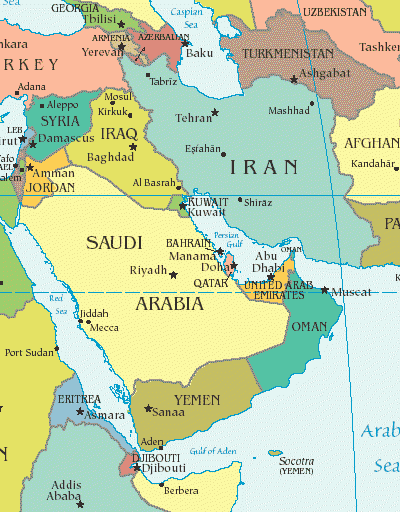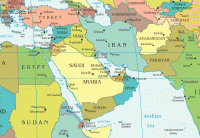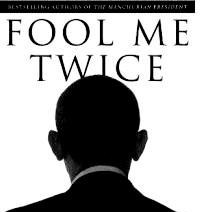By F. Michael Maloof
Washington, March 28, 2013 – Iran and Hezbollah have effectively taken over Syria, guiding the nation’s military operations and functions of government, as the Lebanese resistance group’s fighters have begun to flood into the Damascus area, reveals a well-placed source in the Syrian capital.
To make a “long version really short, Syria no longer exists,” the source told WND.
The government of Syria and the running of the Syrian military are no longer are under the command of the Syrians, he explained.
“Lebanon also is no more,” the source added. Like Syria, “it’s now in the sphere of Iran and Hezbollah” who “run everything now.”
The knowledgeable and well-situated source was referring to ongoing military operations against Syrian opposition forces. Rebel ranks have been infiltrated by Sunni al-Qaida-linked militants, including the al-Nusra Front, which sources say is affiliated with a similar group from Lebanon called Ansar Bayt al-Maqdis.
Because of direct Hezbollah involvement in fighting against anti-Syrian government fighters, militants have threatened to attack Hezbollah strongholds in Lebanon, a prospect that could quickly spread the sectarian Sunni-Shia fighting inside Lebanon.
Pitched battles already are taking place in the northern Lebanese city of Tripoli, a Sunni stronghold. Sunni opposition forces have been engaging Hezbollah fighters who have aligned themselves with Shiites and Shiite Alawites in the region.
Syrian opposition positions near Tripoli and the immediate area recently were bombed by Syrian government forces. The area is one of the main avenues for infiltration of arms and foreign opposition fighters into Syria. The other conduit is Turkey.
If Syrian opposition forces attempted to descend into Lebanon, they would need to go through the Beqaa Valley, which is under Hezbollah’s control. The area is a virtual armed camp, which has been a deterrent to date from the chaos in Syria spilling over too far into Lebanon.
The issue of Iranian and Hezbollah control over military operations and government functions in Syria comes as separate reports reveal they have moved a 50,000-strong force into Syria to fight alongside Syrian government troops.
Sources say there are plans to increase that number to some 100,000 Hezbollah fighters.
“The Hezbollah guys are here (in Damascus), not near Maroun el Ras,” one source said, referring to the influx of Hezbollah fighters into Syria.
Maroun el Ras is a Lebanese village in southern Lebanon about a kilometer from the border with northern Israel. In the 2006 war between Hezbollah and Israel, Maroun el Ras, which is at an elevation of almost 3,000 feet and overlooks Israeli villages, was a focal point.
It was the scene of a major confrontation between the two in which the village’s occupation changed hands during the 34-day conflict. However, Israeli forces never fully occupied the village which ultimately remained in the hands of Hezbollah.
Shiite Iran and its Lebanese proxy, Hezbollah, openly are backing the survival of the embattled regime of Syrian President Bashar al-Assad, who is a Shiite Alawite, fighting a sectarian civil war against Sunni opposition fighters, most of whom are foreigners financed and primarily armed by Sunni Qatar and Saudi Arabia.
The latest reports reveal that the U.S. Central Intelligence Agency is assisting in funneling Qatari and Saudi arms into Syria.
In addition, the Iranian Revolutionary Guard Corps’ elite Quds Force also is advising Syrian commanders, a development which sources say is under the command of Qassem Suleimani, who is overseeing operations out of the Syrian capital, Damascus.
Sources suggest that the reason for direct Iranian and Hezbollah involvement is not only to assist in the fighting but to maintain control over Syria should the government of Assad fall.
Hezbollah also is reportedly training fighting forces which would come under Iran’s control should Assad fall from power.
Iran and Hezbollah are undertaking this direct involvement because of the geostrategic significance Syria is to both entities.
With Syria, Iran has extended its influence from the Middle East to Central Asia. Syria also is a conduit to transfer weapons to Hezbollah in Lebanon.
The interest of Hezbollah involvement in Syria became apparent last October when Hezbollah Secretary-General Sayyed Hasan Nasrallah first signaled the involvement of the resistance movement in Syria.
It was around that period that first reports of dead Hezbollah fighters were being returned from Syria.
At the time, Nasrallah had denied reports of such fighting but didn’t rule out the prospect of Hezbollah fighters engaging the militant fighters in the future.
“As of now,” Nasrallah said at the time, “we have not fought alongside the (Assad) regime. We don’t know about the future.”Link to Article: http://www.wnd.com/2013/03/syria-no-longer-exists/
About our guest. F. Michael Maloof, a former senior security policy analyst in the Office of the Secretary of Defense, has almost 30 years of federal service in the U.S. Defense Department and as a specialized trainer for border guards and Special Forces in select countries of the Caucasus and Central Asia.
While with the Department of Defense, Maloof was director of technology security operations as head of a 10-person team involved in halting the diversion of militarily critical technologies to countries of national security and proliferation concern and those involved in sponsoring terrorism.
His office was the liaison to the intelligence and enforcement community within the Office of the Secretary of Defense in halting transfers and using cases that developed from them as early warnings to decision-makers of potential policy issues.
Following the September 11, 2001, terrorist attack on the United States, Maloof was detailed back to report directly to the undersecretary of defense for policy to prepare analysis of worldwide terrorist networks, determine their linkages worldwide and their relationship to state sponsors.








